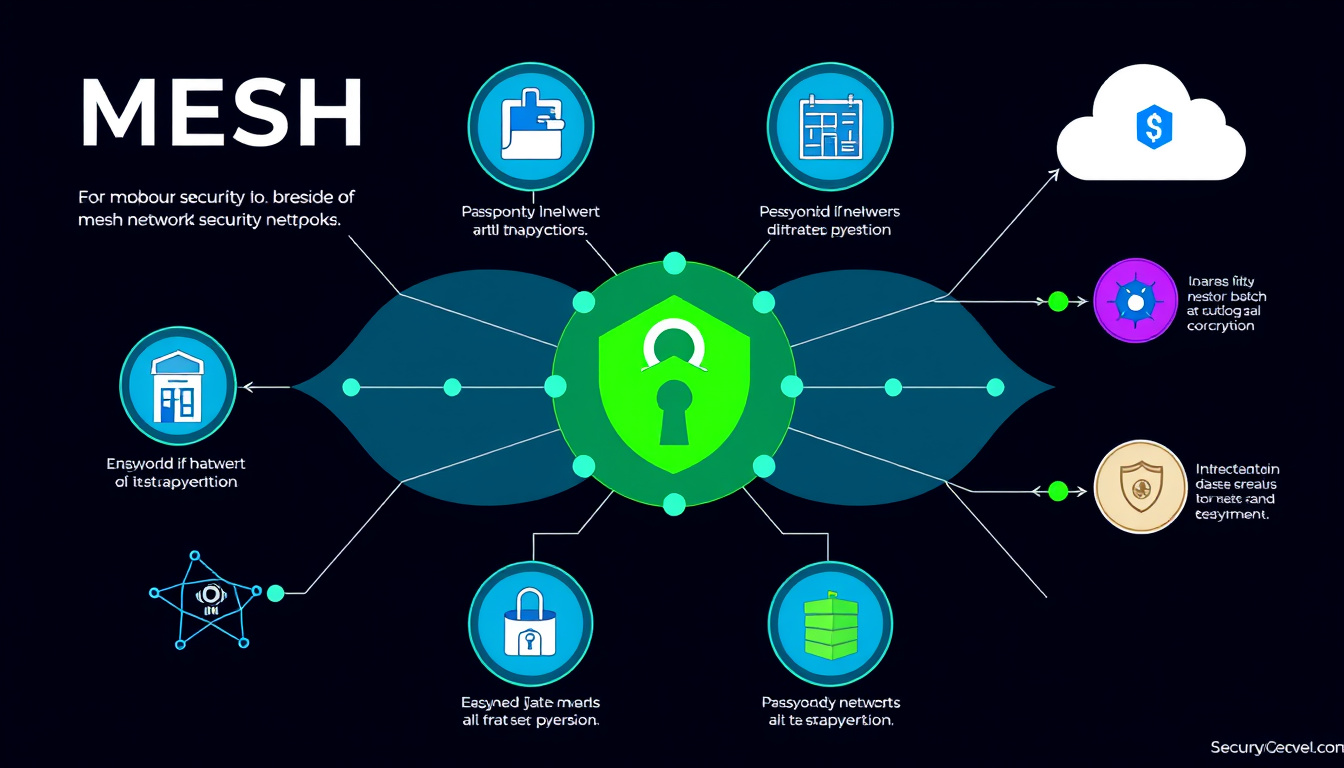As the demand for seamless and reliable connectivity increases, particularly with the expansion of smart homes and IoT devices, mesh networks have emerged as a promising solution. However, understanding mesh network security protocols is essential to leverage their full potential while safeguarding against vulnerabilities. In this guide, we will explore the intricacies of mesh networks, their security implications, and best practices for achieving robust protection.
What is a Mesh Network?
A mesh network consists of multiple interconnected nodes, working collaboratively to create a unified and resilient network. Unlike traditional single-router setups, where the signal may weaken over distance or face obstructions, mesh networks distribute connectivity evenly across multiple access points. Each node serves as a relay, communicating dynamically with other nodes to optimize signal strength and reliability.
How Mesh Networks Function
Mesh networks function through a decentralized framework, where each node can connect to multiple other nodes, leading to enhanced resilience. Should one node fail, data can be rerouted through alternate paths without interrupting service. This structure is particularly beneficial in environments where traditional wired connections are impractical, such as large homes or remote areas.
- Primary Nodes: These act as the central hub, often connected directly to the internet.
- Secondary Nodes: Strategically placed throughout the area to extend coverage and create a web of connections.
- Seamless Handoff: Devices switch between nodes automatically, ensuring uninterrupted connectivity as users move.

Benefits of Mesh Networks
The informative landscape of mesh networks reveals several advantages:
- Whole-Home Coverage: Comprehensive coverage for large or multi-story buildings, eliminating weak signal areas.
- Seamless Connectivity: Devices enjoy consistent connections, crucial for activities such as video conferencing or online gaming.
- Scalability: Easily expand the network by adding more nodes without significant infrastructure changes.
- Increased Reliability: Built-in redundancy means that if one node goes down, others can take over, maintaining connectivity.
Security Protocols in Mesh Networks
Despite their advantages, mesh networks also present unique security challenges. Implementing effective security protocols is crucial to protect against unauthorized access and cyber threats.
Key Security Protocols
- WPA3 Encryption: The latest Wi-Fi security standard, WPA3 provides improved encryption methods, making it harder for attackers to exploit vulnerabilities.
- Automatic Firmware Updates: Regular updates help address newly discovered vulnerabilities, ensuring that all nodes remain secure.
- Network Monitoring: Numerous mesh systems include features to monitor network traffic and detect unusual activities or breaches.
Challenges and Vulnerabilities
Mesh networks can be more difficult to manage and secure than traditional networks due to their decentralized architecture. Specific challenges include:
- Increased Attack Surface: More nodes mean more potential points of attack. Each node must be protected to ensure the overall network’s security.
- Complex Routing Issues: The absence of a central control point can lead to complications in routing and resource management, making it harder to implement security measures.
- Inconsistent Security Practices: With various manufacturers and configurations, ensuring uniform security standards across all nodes can be challenging.
Best Practices for Enhancing Mesh Network Security
To bolster the security posture of a mesh network, consider implementing the following best practices:
- Use WPA3: Always opt for mesh systems that support WPA3 to benefit from the most robust encryption.
- Regular Updates: Enable automatic updates for firmware and security patches to address vulnerabilities without manual intervention.
- Network Segmentation: Isolate critical devices from general network access (such as IoT devices) to minimize the risk of widespread compromise.
- Strong Passwords and Guest Networks: Use unique, complex passwords for your network and set up a separate guest network for visitors to mitigate risks of unauthorized access.
- Monitor Traffic: Utilize built-in monitoring tools to keep an eye on device activity, allowing for prompt detection and resolution of suspicious behavior.
Conclusion
Mesh networks offer a flexible and robust solution for improving connectivity across a variety of settings—from residential homes to expansive office spaces. However, understanding and implementing appropriate security protocols is essential to mitigating the risks associated with their decentralized nature. By adopting best practices and using advanced security measures such as WPA3 encryption and regular firmware updates, users can enjoy the benefits of mesh networking while keeping their data secure.
With the continuing evolution of smart technologies and increasing reliance on seamless connectivity, developing a strong comprehension of mesh network security will be fundamental in navigating future network landscapes.



